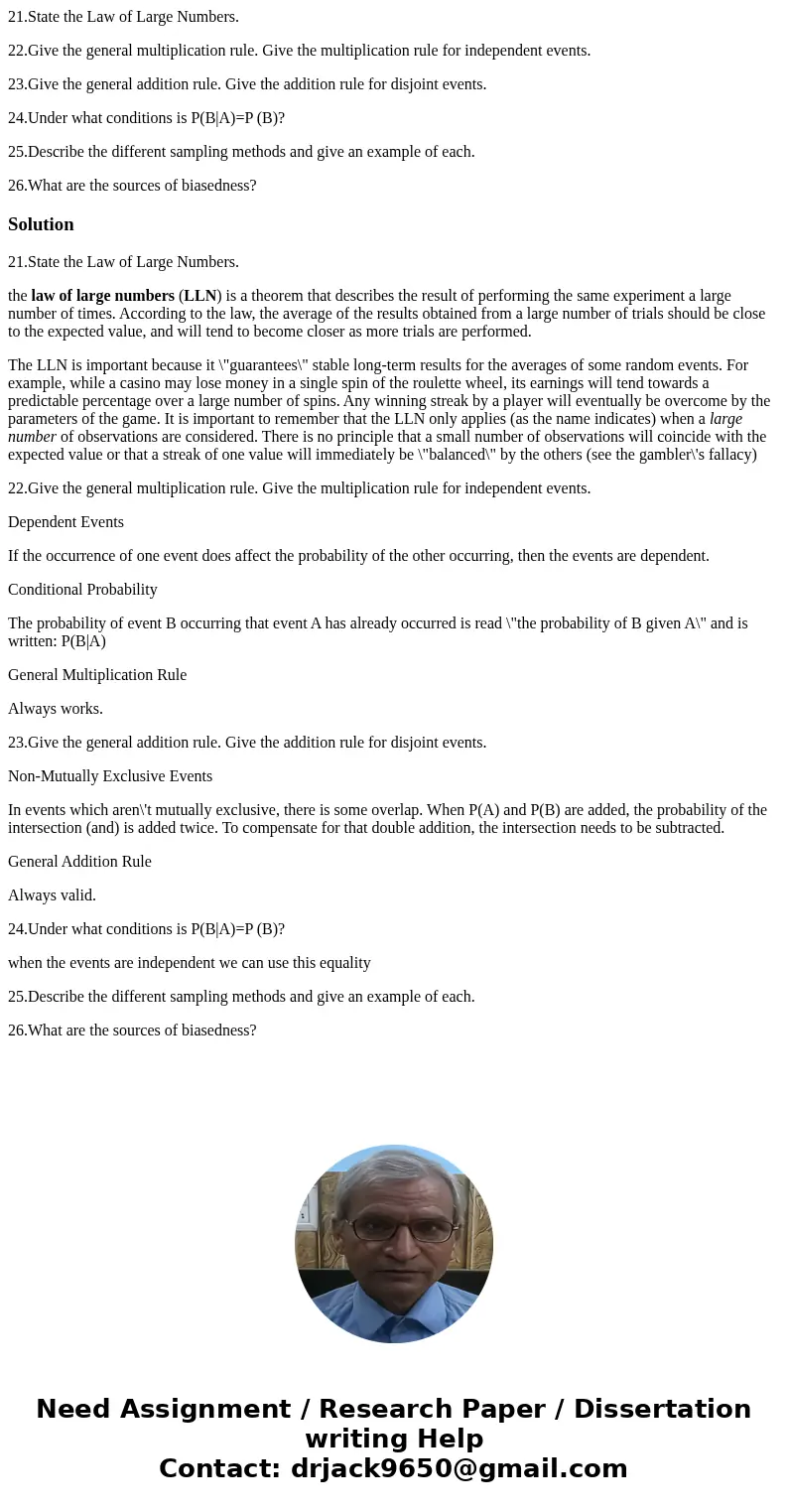21State the Law of Large Numbers 22Give the general multipli
21.State the Law of Large Numbers.
22.Give the general multiplication rule. Give the multiplication rule for independent events.
23.Give the general addition rule. Give the addition rule for disjoint events.
24.Under what conditions is P(B|A)=P (B)?
25.Describe the different sampling methods and give an example of each.
26.What are the sources of biasedness?
Solution
21.State the Law of Large Numbers.
the law of large numbers (LLN) is a theorem that describes the result of performing the same experiment a large number of times. According to the law, the average of the results obtained from a large number of trials should be close to the expected value, and will tend to become closer as more trials are performed.
The LLN is important because it \"guarantees\" stable long-term results for the averages of some random events. For example, while a casino may lose money in a single spin of the roulette wheel, its earnings will tend towards a predictable percentage over a large number of spins. Any winning streak by a player will eventually be overcome by the parameters of the game. It is important to remember that the LLN only applies (as the name indicates) when a large number of observations are considered. There is no principle that a small number of observations will coincide with the expected value or that a streak of one value will immediately be \"balanced\" by the others (see the gambler\'s fallacy)
22.Give the general multiplication rule. Give the multiplication rule for independent events.
Dependent Events
If the occurrence of one event does affect the probability of the other occurring, then the events are dependent.
Conditional Probability
The probability of event B occurring that event A has already occurred is read \"the probability of B given A\" and is written: P(B|A)
General Multiplication Rule
Always works.
23.Give the general addition rule. Give the addition rule for disjoint events.
Non-Mutually Exclusive Events
In events which aren\'t mutually exclusive, there is some overlap. When P(A) and P(B) are added, the probability of the intersection (and) is added twice. To compensate for that double addition, the intersection needs to be subtracted.
General Addition Rule
Always valid.
24.Under what conditions is P(B|A)=P (B)?
when the events are independent we can use this equality
25.Describe the different sampling methods and give an example of each.
26.What are the sources of biasedness?

 Homework Sourse
Homework Sourse